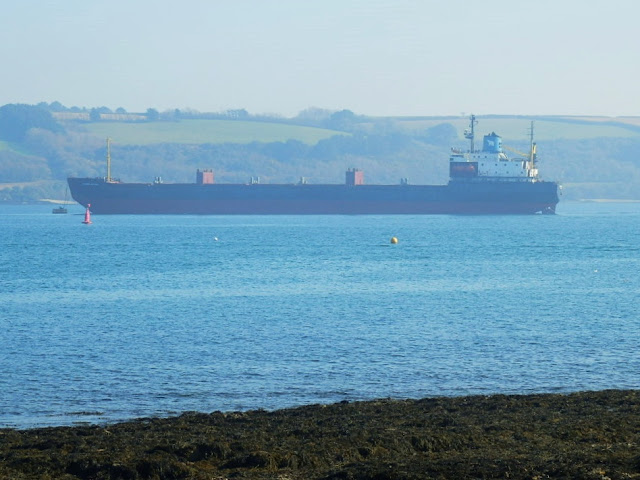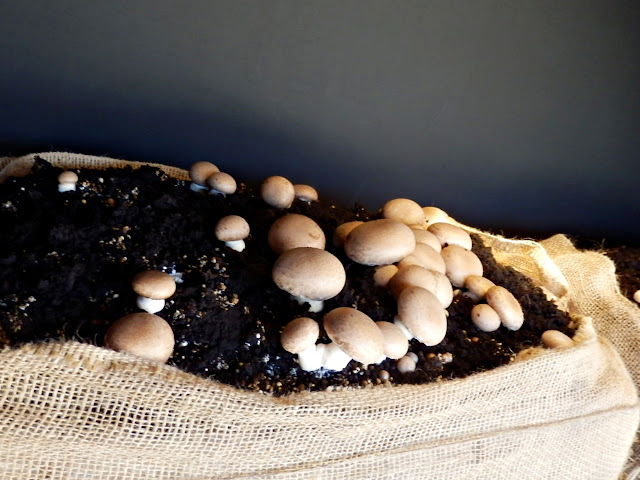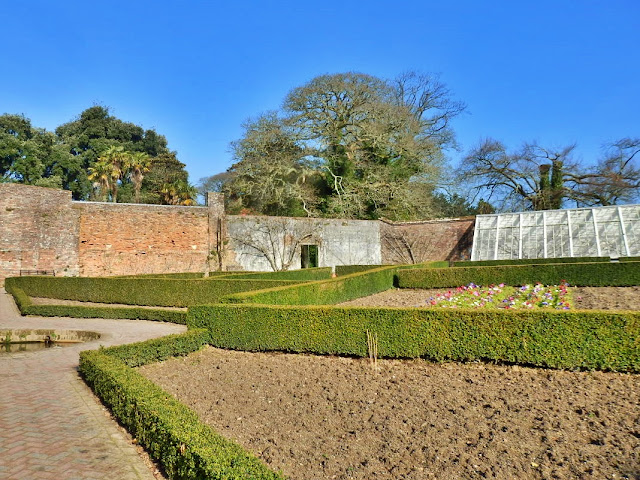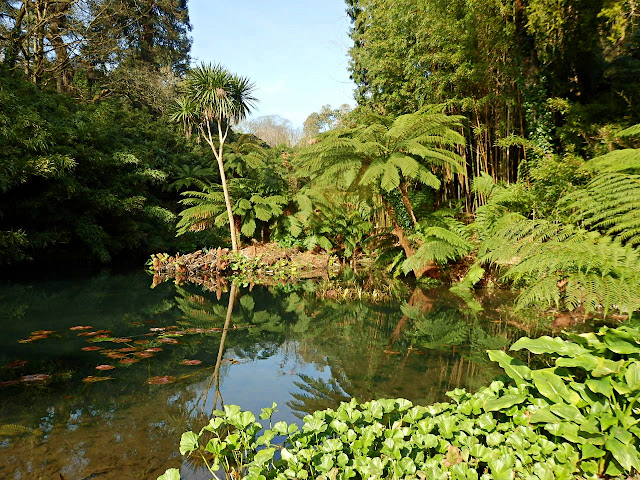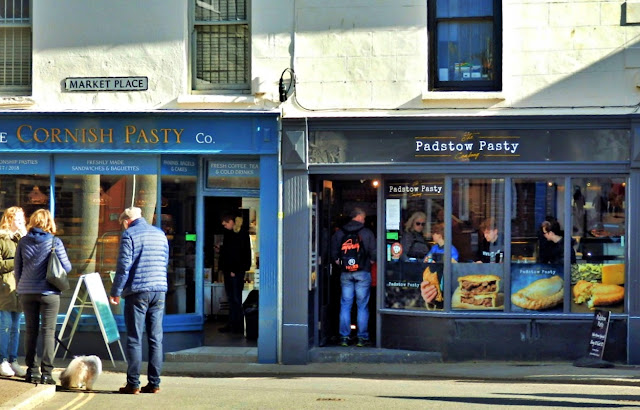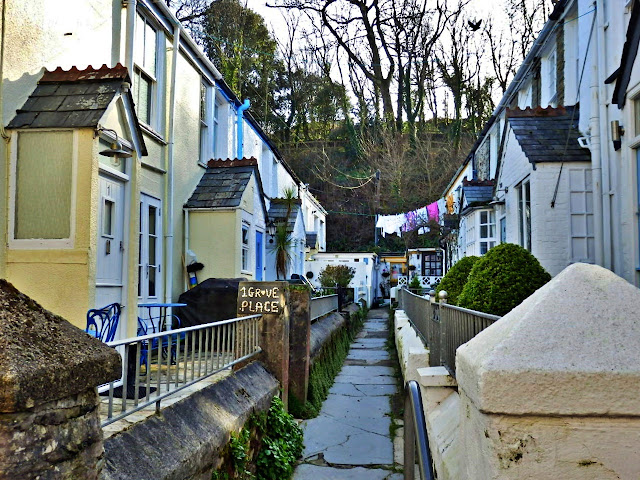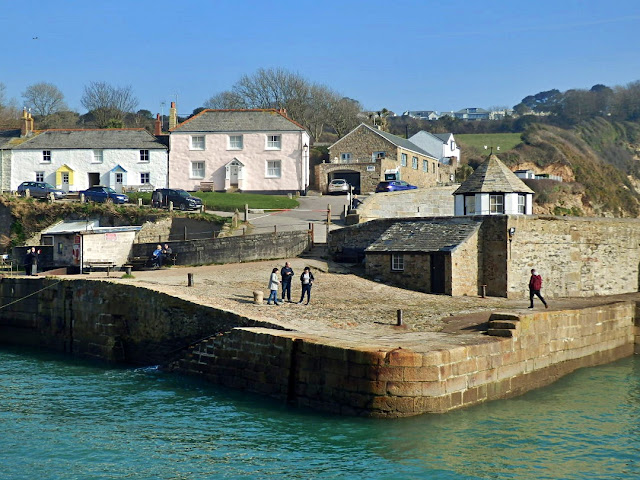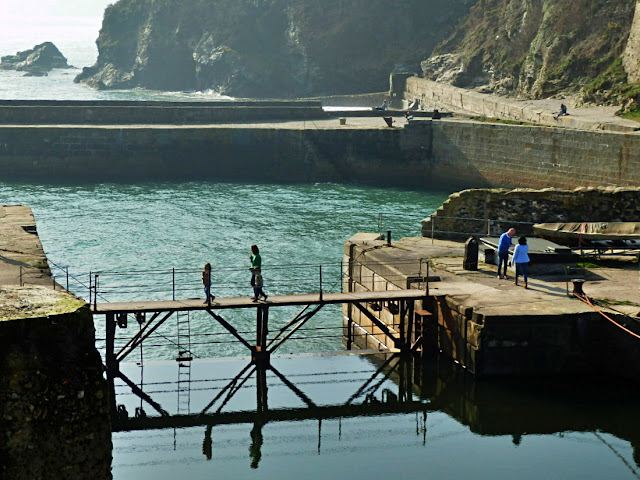Sunday 3 March 2019
Road Names and the Cornish Language
Many street signs in Cornwall are gradually being altered to show the name in both the Cornish and English languages.
Cornish isn't spoken generally but there seems to be a desire to keep the language alive. You may have read on my Mousehole Post that the last native speaker of the Cornish language is believed to have been a Dolly Pentreath. She lived in Mousehole and died in 1777.
There are night classes for the Cornish language locally - my son went to a few.
For interest here are a few Cornish words that you may see if in Cornwall. Like Tre, for example, which means home. Many place names start with this (for example: Trethurgy, Tregony, Tresillian) - so it is easy to see how the names came about.
Here are a few more Cornish language words:
Alls - cliff
Bod - a dwelling; Bownder - a lane; Brea - a mound; Bryn - hill
Carn - rock pile; Carrack - rock; Coombe - valley; Creek - burial ground
Dennis - fort; Dinnis - fort; Dowr - water
Eglos - church; Ennis - island
Forth - road
Garth - garden; Glas or Glaze - blue / green; Good - lowland
Hayle - estuary; Hen - old; Huel - mine
Kelly - copse; Kynance - steep valley
Lan - church enclosure; Lys - court
Maen - stone; Mor - sea; Mur - big
Nan - valley; Noon - lowland
Olds - cliff
Parc - field; Pen - head; Penwith - headland tip; Ponds - bridge; Porth - cove; Praze - meadow
Red - ford; Reeth - red; Ryn - steep slope
Sans - holy ground; Scath - boat; Sten - tin
Tewen - sand dune; Toll - hole; Tre - home; Treath - beach; Tren farmstead; Ty - house
Vean - small; Veor - great
Wartha - upper; Wheal - mine; Win - white; Withen - tree; Woon - lowland
Yet - gateway
Zawn - gorge.
I think that will do!
Saturday 2 March 2019
St. Mylor Church, Cornwall
A shortish post today following on from yesterday's post: A Perfect Day At Mylor Cornwall. While at the village we also visited the local church.
The church was founded over 1500 years ago by St. Mylor (St. Melorus). As with many Cornish saints of the Celtic Church he has links also with Brittany. It is generally quoted that he died in 411 A.D.
The present church is of Norman origin, circa 1100 AD, and has many interesting features such as: the Norman Doorway, a 15th century Rood Screen, Elizabethan Pulpit and a 13th century font.
Friday 1 March 2019
A Perfect Day At Mylor Harbour
Yesterday was quite extraordinary weatherwise. It felt more like summer than February - at times there was even a heat haze over the water.
Luckily we were at Mylor harbour where the boats glinted in the sunshine.
As we tend to do, we walked along the river path, so very peaceful and then returned to the harbour. The next six photos are from the walk.
The above photo shows the heat haze, I mentioned earlier - as the large boat made its way along the River Fal.
Below is looking inland where a farmer had just ploughed his field ready for planting.
And finally we returned to the boats and Mylor Harbour. Such a perfect day.
P.S. The photo below is how February 2018 looked in Cornwall. What a difference, almost unbelievable!
See also: St. Mylor Church, Cornwall
 |
Thursday 28 February 2019
Postcard and Photos of Tregony, Cornwall
The picture is of a postcard from my collection. It is taken from an original water colour by Peter Skipp. The reverse of the card reads:
"Tregony was once a busy port, with the right to send two Members of Parliament to Westminster. The tin mines and china clay pits, however, were the cause of their own destruction as silt clogged the River Fal.
Despite Acts of Parliament aimed at stopping mining, the waters receded leaving the highest navigable point over four miles away."
To see Tregony today it is hard to believe it was once a busy port - but time moves on.
I have a few photos of the village. There are some interesting buildings. The clock tower, for example, is from the 1833. There is a strange story that it was sold to an Australian gentleman in 1851. However, the Mayor at the time stepped in to prevent the sale by buying the clock himself - and eventually he sold it back to the people of the village.
Then there are the houses - below - built in 1696 ...
... and a row of Poor Houses from the 19th century.
The church is a mixture of 12th, 14th and 15th century architecture but was partly rebuilt and lengthened in 1828.
Wednesday 27 February 2019
Thirteen February Photos of The Lost Gardens of Heligan, Cornwall
Monday was a wonderful day, with blue sky and sunshine, supposedly one of the hottest February days on record. So we went along to The Lost Gardens of Heligan - again - and I snapped a few photos as we walked. Starting off with the rhododendrons.
A few sacks of mushrooms were hidden away from the daylight and looked very tempting.
The Head Gardeners Office was snug and warm with a real log fire burning away. This is how it would have looked prior to 1914.
More territory awaiting planting, this will be full of flowers in the summer months.
The Sundial garden could also do with some colour - always looks special during the summer months.
And then we head off to the green, green fields of Heligan.
More greenery but many of the trees are still without leaves at the present time.
Now some water. Firstly a lake and then ...
... more water in the jungle! A few goldfish spotted in the depths.
And now it's snooze time, at least for the pigs.
Finally, back to the rhododendrons. The Lost Gardens of Heligan cover some 200 acres so there is much to discover.
I have written a previous post on Heligan, with photos, which can be seen on Lost Gardens of Heligan in Winter
Tuesday 26 February 2019
Padstow, Cornwall: Ghosts, Cornish Pasties, Fish & Chips And More
Following on from my Padstow Post - of the 24th of February - a few random photos as I walked round the town.
The photo above is Abbey House on Padstow's North Quay. It is described by some as the oldest house in Cornwall. As far back as the days of Queen Elizabeth I (1533–1603) it was being described as old! So, of course, it has a ghost ...
... the ghost who haunts Abbey House is said to be an Elizabethan lady. She is sad and alone and is often seen ascending the 15th century granite stairway from the cellar, as she silently makes her way along a passage which forms the oldest part of the house.
On a more cheerful note: a fish and chips shop below ...
... and, if you are in Cornwall, there also has to be a Cornish Pasty shop.
The next photo is the Golden Lion pub and it "dates back to the 14th century and is the oldest inn in Padstow."
Now we have Anchor Cottage, which is very difficult to miss - because of its bright colour.
The houses below face each other so you wouldn't want to fall out with the neighbours opposite. But there is somewhere to dry the washing.
Houses in Church Street:
And that's about the end. These gravestones date from the early. 1830s.
Monday 25 February 2019
Charlestown Harbour On A Sunshine Morning
 |
A Sunday walk yesterday included Charlestown, Cornwall, as per the photos. A pleasant sunny day for February, though a little hazy first thing. Photo above is looking across to the Pier House (restaurant, bar and accommodation).
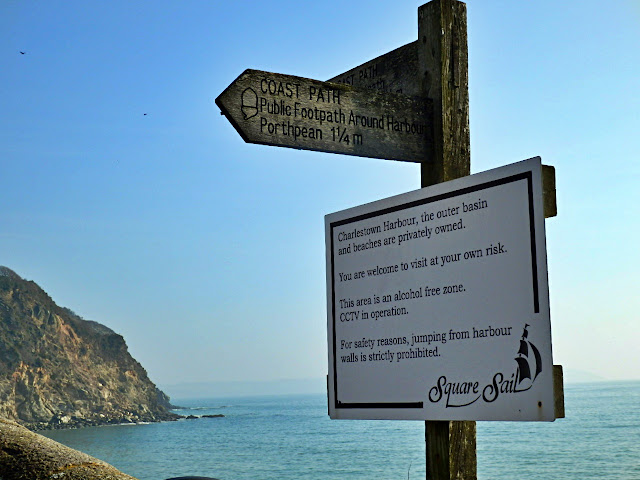
Walking the Beach at Charlestown, Cornwall
Charlestown Built To Export Copper Ore
The Cave On Charlestown Beach, Cornwall
Subscribe to:
Posts (Atom)
FEATURED POST
A Walk to Pentewan Village, Beach and Harbour
It was a sunshine day so we decided on a walk to Pentewan along the Pentewan Trail starting from the bridge as shown above. ...












